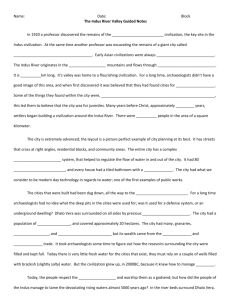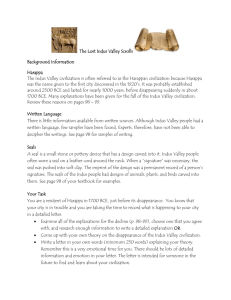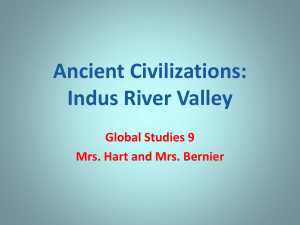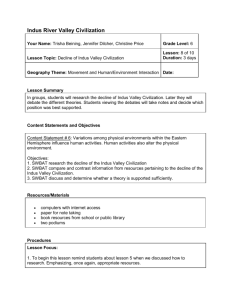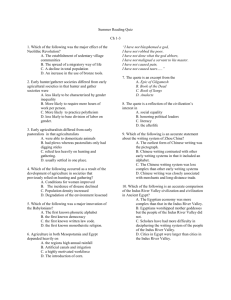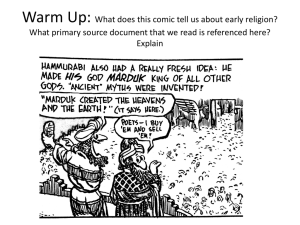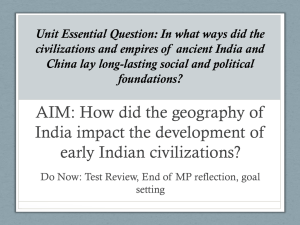Indus Valley Civilization
advertisement
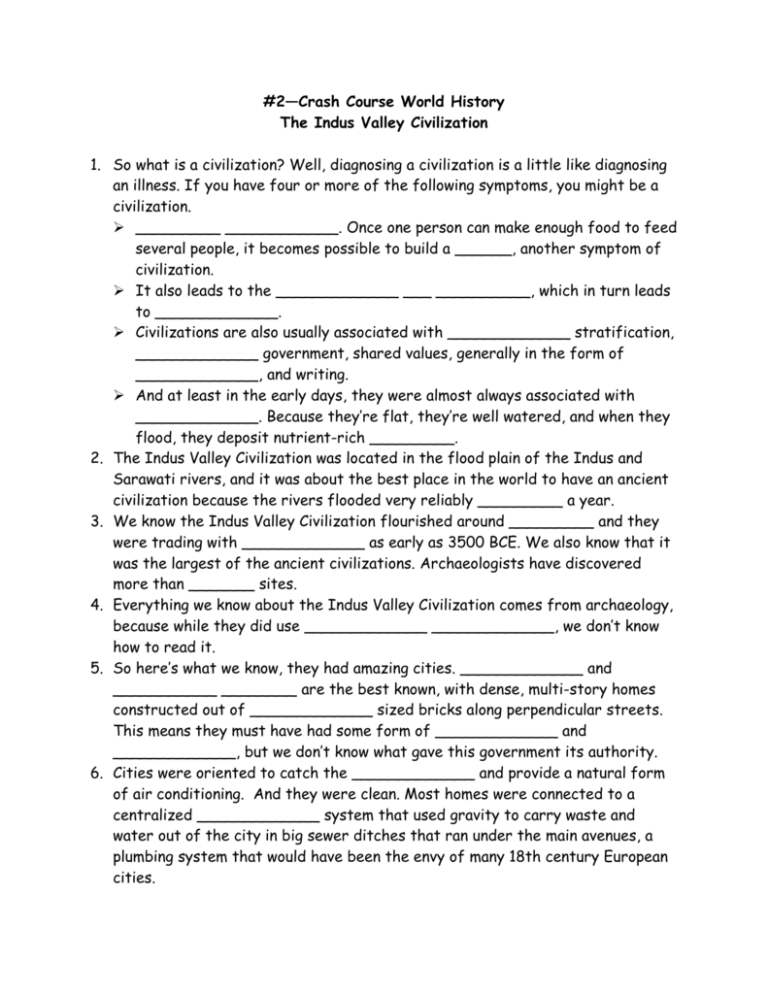
#2—Crash Course World History The Indus Valley Civilization 1. So what is a civilization? Well, diagnosing a civilization is a little like diagnosing an illness. If you have four or more of the following symptoms, you might be a civilization. _________ ____________. Once one person can make enough food to feed several people, it becomes possible to build a ______, another symptom of civilization. It also leads to the _____________ ___ __________, which in turn leads to _____________. Civilizations are also usually associated with _____________ stratification, _____________ government, shared values, generally in the form of _____________, and writing. And at least in the early days, they were almost always associated with _____________. Because they’re flat, they’re well watered, and when they flood, they deposit nutrient-rich _________. 2. The Indus Valley Civilization was located in the flood plain of the Indus and Sarawati rivers, and it was about the best place in the world to have an ancient civilization because the rivers flooded very reliably _________ a year. 3. We know the Indus Valley Civilization flourished around _________ and they were trading with _____________ as early as 3500 BCE. We also know that it was the largest of the ancient civilizations. Archaeologists have discovered more than _______ sites. 4. Everything we know about the Indus Valley Civilization comes from archaeology, because while they did use _____________ _____________, we don’t know how to read it. 5. So here’s what we know, they had amazing cities. _____________ and ___________ ________ are the best known, with dense, multi-story homes constructed out of _____________ sized bricks along perpendicular streets. This means they must have had some form of _____________ and _____________, but we don’t know what gave this government its authority. 6. Cities were oriented to catch the _____________ and provide a natural form of air conditioning. And they were clean. Most homes were connected to a centralized _____________ system that used gravity to carry waste and water out of the city in big sewer ditches that ran under the main avenues, a plumbing system that would have been the envy of many 18th century European cities. 7. In Mohenjo Daro, the largest public building was not a temple or a palace, but a _____________ _____________, which historians call the Great Bath. We don’t know what the great bath was used for, but since later Indian culture placed a huge emphasis on _____________ _____________, which is the basis for the ________ __________, some historians have speculated that the bath might have been like a giant baptismal pool. 8. Also, they traded. One of the coolest things that the Indus Valley Civilization produced were _____________ used as identification markers on goods and clay tablets. These seals contained the writing that we still can’t _____________, and a number of fantastic designs, many featuring animals and monsters. How do these seals let us know that they traded? Well, because we found them in _____________, not the Indus Valley. Plus, archaeologists have found stuff like bronze in the Indus Valley that is not native to the region. So what did they trade? _____________ _____________. 9. But here’s the most amazing thing about the Indus Valley people. They were _____________. Despite archaeologists finding 1500 sites, they have found very little evidence of _____________, almost no _____________. 10. So what happened to these people? Sometime around _______ BCE, the Indus Valley Civilization declined until it faded into obscurity. Why? Historians have three theories. One: _____________! Turns out to be a terrible military strategy not to have any weapons, and its possible people from the Indus Valley were completely overrun by people from the Caucasus. Two: _____________ Disaster! It’s possible they brought about their own end by destroying their environment. Three: The most interesting theory is that a massive _____________ changed the course of the rivers so much that a lot of the tributaries dried up. Without adequate water supplies for __________, the cities couldn’t sustain themselves, so people literally picked up and headed for greener pastures.


![Indus[1] - ridgeaphistory](http://s3.studylib.net/store/data/006736077_1-c59280ecd30594bac8ab21ec7bce4db4-300x300.png)

